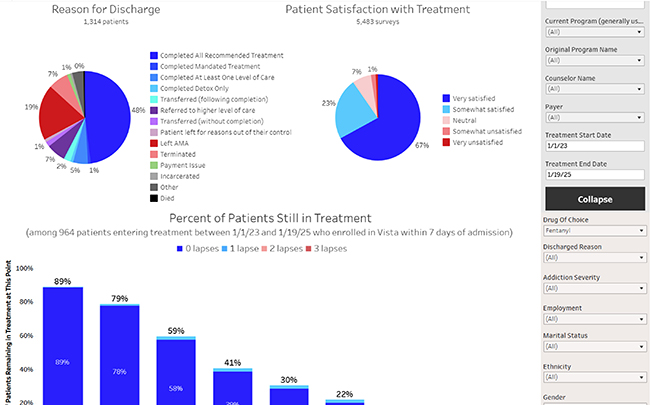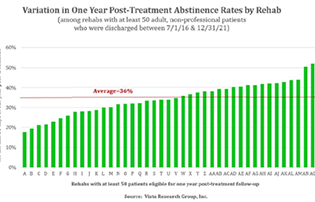When my daughter developed a serious alcohol problem, I scoured the internet for hard data on what the chances were that she would be able to recover after going to treatment. Unfortunately, such data was shockingly hard to find in 2008. It still is.
Based on systemically following up with 10,000 substance use disorder patients who discharged from addiction treatment between October 22, 2021 and December 31, 2023, we can now provide accurate answers.
Patients Whose Primary Drug of Choice is Alcohol Have the Best Success Rates
Patients who were in treatment for alcohol use disorder (AUD) have the highest one year recovery success rates. Forty-one percent (41%) of AUD patients were reachable and reported not having used alcohol or any non-prescribed drugs for at least the last 30 days at one year post-treatment. Patients whose primary drug of choice was amphetamines or marijuana also had high one year success rates of 40% and 38%, respectively:
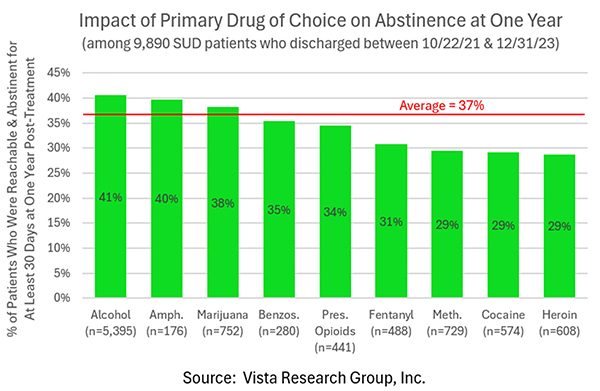
Patients in treatment for addiction to benzodiazepines (like Xanax) or prescription opioids such as Oxycontin were somewhat less successful in abstaining from drugs or alcohol one year after discharge than patients addicted to alcohol, amphetamines or marijuana. The worst results were for patients addicted to fentanyl, methamphetamine, cocaine or heroin, only 29% to 31% of whom were reachable and not using any non-prescribed substances one year later.
Why Does Fentanyl Have a Higher Recovery Rate than Heroin?
I was surprised that fentanyl users had a higher success rate than individuals who said their primary drug of choice was heroin, since most “heroin” available on the street during these years was actually fentanyl. Digging deeper into the data, I found that recovery rates for patients with opioid use disorder (OUD) varied dramatically by how patients reported using their drug:
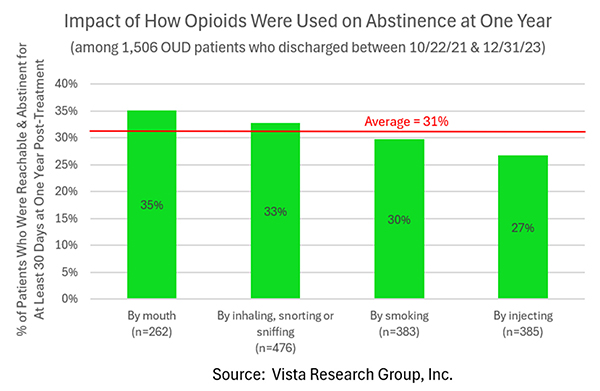
Thirty-five percent (35%) of those who reported taking their opioids by mouth were abstinent one year after leaving treatment. By comparison, only 33% who took it by inhaling, snorting or sniffing and 30% who smoked opioids were reachable and abstinent one year post-treatment. Not surprisingly, the worst abstinence rates (27%) were among individuals injecting opioids.
It looks like the reason patients whose primary drug of choice was fentanyl had better outcomes is that only 12% of these individuals were injecting their drug. By comparison, 51% of patients who claimed a primary drug of choice of heroin were injecting it:
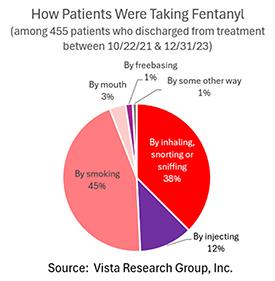 | 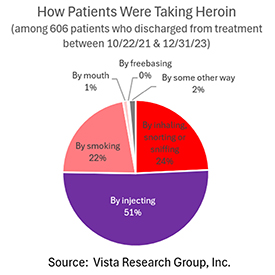 |
As expected, the majority (54%) of patients whose primary drug of choice was prescription opioids reported ingesting them by mouth:
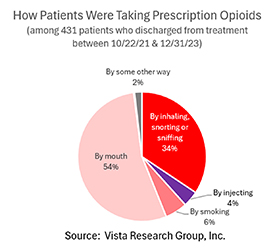
How Patients Take Their Drug Impacts Their Likelihood of Recovery
The mode by which a patient uses their drug of choice has a substantial impact on how likely they are to be doing well one year after discharge. The following chart shows the one year abstinence rates for patients being treated for any kind of drug addiction (excluding alcohol) according to how they were typically using their primary drug of choice. Individuals who were taking their drug by mouth were 34% more likely to be abstinent one year later compared to those who were injecting it:
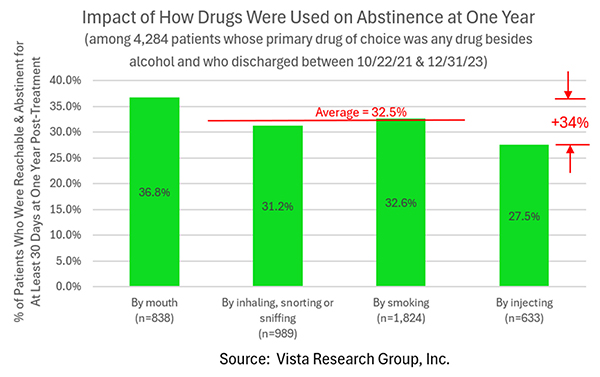
Are you surprised by these findings? Do they raise any additional questions for you? Please share your thoughts on LinkedIn. 😊
TL/DR: Key Take-Aways
For Families: Few people start out injecting drugs; most people “graduate” to injecting when they find that other methods no longer provide the high they’re craving. Over one-third (37%) of OUD patients who were taking opioids by mouth reported using them problematically for 2 years or less. By comparison, only 21% of those who were injecting opioids reported using them problematically for this short a time:
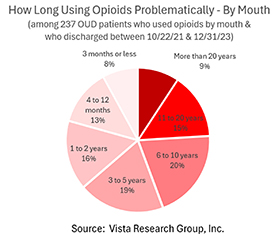 | 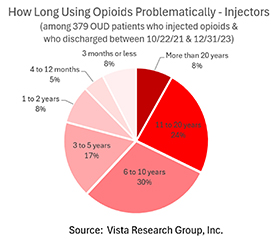 |
The earlier you can get your loved one into treatment, the less likely they will have progressed to injecting their drug and the better their chance of recovery is.
Other News
Alert to data nerds: We’ve upgraded Vista’s data analytics platform yet again! Clients can now analyze 65 patient-reported metrics and outcomes by numerous additional variables, including primary drug of choice, gender, age and discharge reason. 😂 Check out how Vista’s research could benefit your center.
